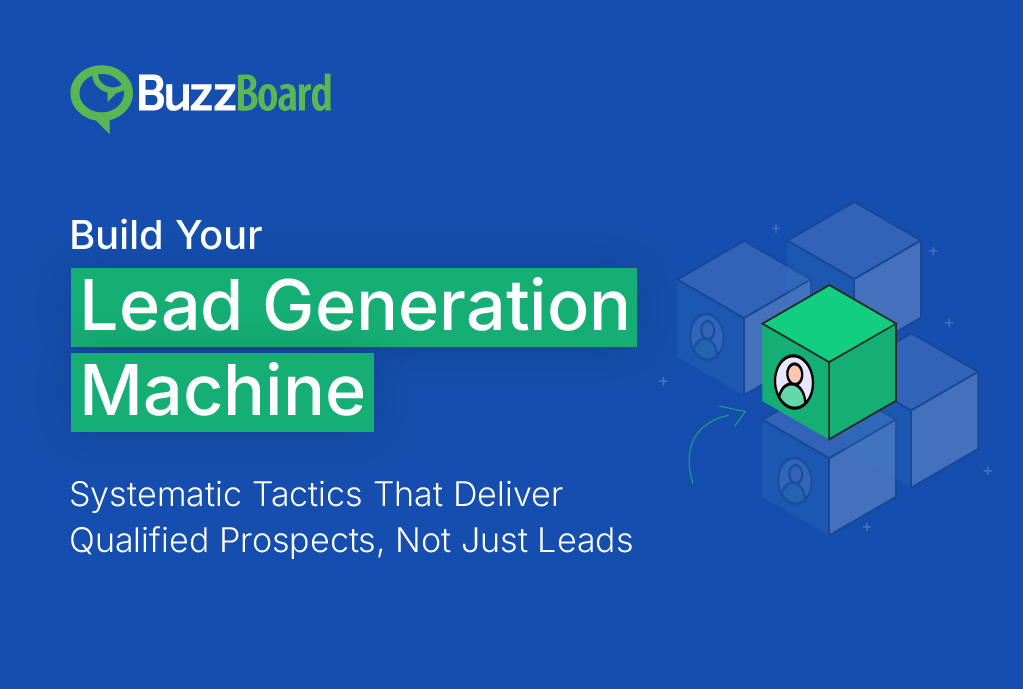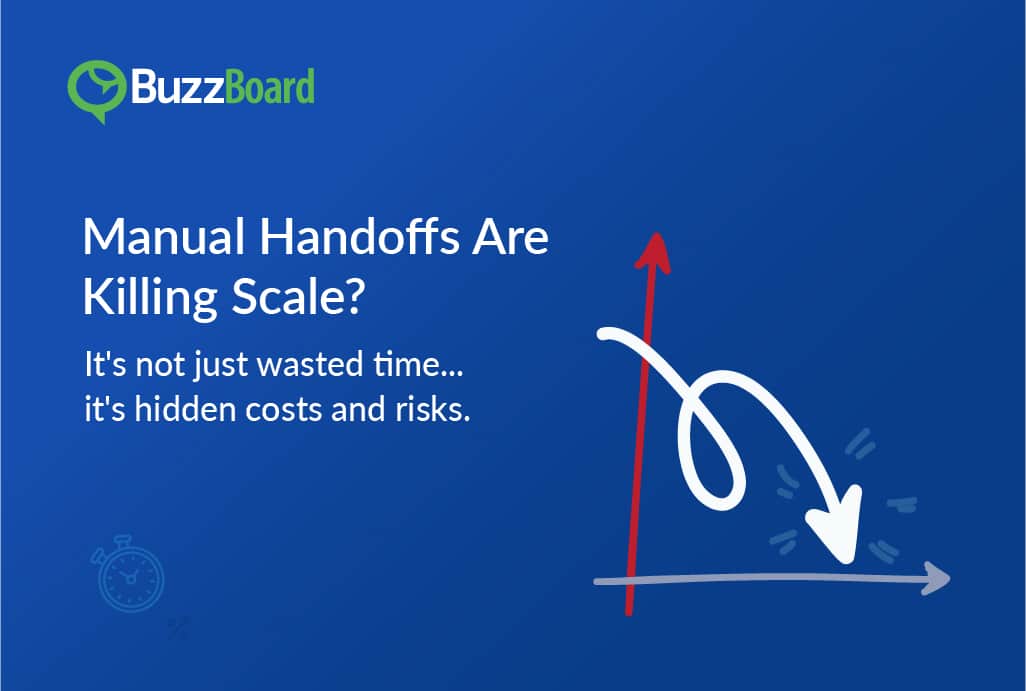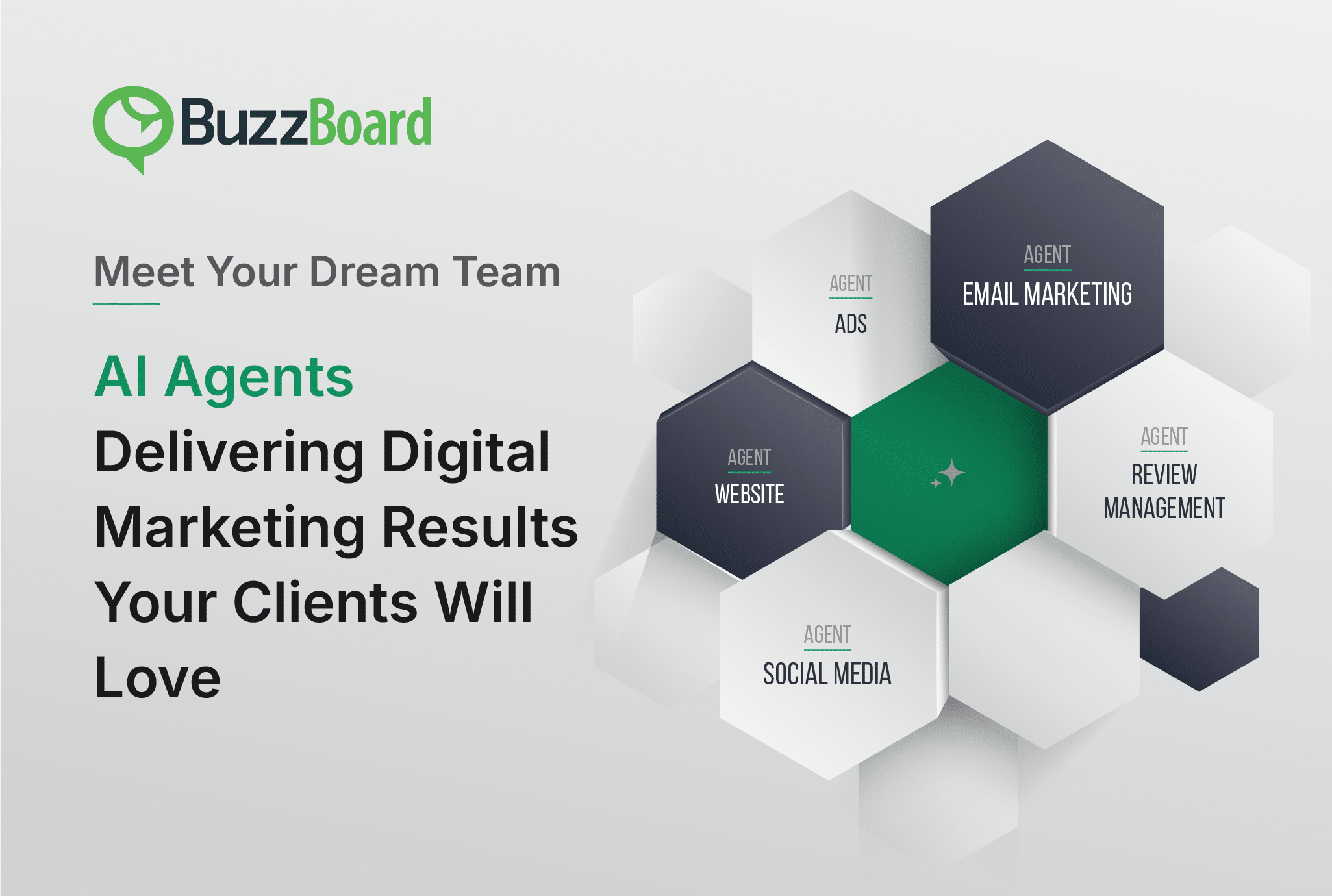Generating small business leads that consistently translate into sales is no easy task. So usually, what makes it so difficult?
In today’s competitive market, the quality of your leads is just as important as the quantity. Simply ramping up lead volume without ensuring those leads are well-qualified will only drain your resources without delivering results.
“Lead quality is one of the biggest marketing challenges faced by B2B companies, with 42% of businesses reporting on issues related to low-quality or irrelevant leads.”
Now, there are other factors too. From tight budgets to a fragmented market, a prevalent DIY mindset among SMB owners to slower decision-making—all of which take you back to lead quality or generating a targeted list of SMB leads. But wait, even that’s not foolproof if the database is outdated, leads that don’t match target job titles, company size, location, or industry due to incorrect information, and repetitive leads or existing customer profiles.
As sales professionals or consultants, you’ve stumbled upon generic advice or surface-level tactics on the internet over and over. Therefore, today we’ll discuss true sales expertise to help you spot the right opportunities by cutting through the noise with tailored outreach and leveraging your experience to turn conversations into conversions. Let’s explore how top-performing sales pros succeed in the SMB space, and how you can do the same.
Understanding the Small Business Landscape
Now, before you dive into lead generation strategies, it’s utmost important to comprehend the small business environment. Small businesses are diverse, ranging from local mom-and-pop shops to niche startups. The first step is to identify your target market within this spectrum and understand their pain points, goals, and challenges.
- Narrow down your focus to a specific industry or business type that aligns with your digital marketing products and services. Do you specialize in specific niches like healthcare, restaurants, or e-commerce?
- Research the market to identify trends and tailor your offerings to meet the unique needs of that niche. What problems can your agency solve for them?
- Are you focusing on local businesses or a broader market? Small businesses often appreciate local providers, so highlight your familiarity with the area and its business landscape.
- A small business’s online footprint speaks volumes about its digital maturity. And it enables agencies to customize their lead generation tactics, ensuring alignment with the prospect’s technological capabilities and openness to digital solutions. Simply put, a robust digital footprint indicates a higher level of digital maturity, suggesting the business is more likely to engage with and benefit from advanced digital marketing strategies. Conversely, a limited or outdated online presence may signal challenges in digital engagement, requiring tailored approaches to effectively reach and convert such leads. Consider the following assessments to measure prospects’ digital maturity.
- Check for their website quality, social media activity, and ranking
- Evaluate their use of technology
- Assess their efforts in creating and sharing content
- Use digital maturity assessment tools to provide immediate value
Digital Lead Generation Strategies for Small Business Markets: Content Marketing Approaches
In the small business market, trust is everything. Content marketing is a powerful way to establish credibility, build relationships, and guide potential clients through the decision-making process. Here’s how agency or media house professionals can leverage content to generate leads effectively:
- Educational Content Creation: Develop high-quality resources such as blogs, whitepapers, and guides that address the specific challenges small businesses face, like budget constraints and scaling growth.
Remember, to position your brand as a trusted authority, your team must create content that demonstrates proven expertise and results.- Develop detailed case studies that showcase specific outcomes, metrics, and implementation strategies, paired with client testimonials that validate your approach.
- Format success stories to highlight both quick wins and long-term value, making them relatable to potential clients facing similar challenges.
- Strengthen your authority by producing original industry research reports that provide valuable insights into market trends and best practices.
- Complement these with expert interviews featuring industry leaders and decision-makers who can offer additional perspectives and validate your methodologies.
- Industry-Specific Resources: Tailor content to the unique needs of different industries, providing actionable insights that resonate with your target audience. This approach enhances relevance and engagement.
Regular thought leadership content, such as analysis of industry developments or predictions about future trends, helps position your brand as a forward-thinking advisor rather than just a service provider. The key is to consistently deliver content that demonstrates not just what you know, but how effectively you can apply that knowledge to drive results. - Lead Magnets and Downloadable Assets: Lead magnets that resonate with small businesses must offer immediate practical value. Focus on developing tools and resources that solve specific problems, such as:
- industry-specific templates that streamline common processes
- ROI calculators that help justify investments
- assessment frameworks that identify business improvement opportunities
- a digital maturity assessment tool to help prospects run a quick digital audit of their own business or one of their competitors. Or, perform a digital maturity assessment for them (include a competitive comparison of some likely competitors in the neighborhood) and share a compiled report.
Free tools like cost calculators, proposal templates, or performance benchmarking spreadsheets tend to convert well since they provide tangible value upfront. The key is ensuring your lead magnet addresses a pressing pain point while showcasing your expertise. Consider creating a suite of complementary resources that guide businesses through different stages of their journey, from initial assessment to implementation planning. Remember to maintain high quality across all offerings; even free resources should reflect your professional standards and demonstrate the value of your paid services. - Digital Presence of Your Business: Optimizing your company’s online presence to target and engage SMBs would support your lead generation. Having a robust presence that can attract the right niche, business types, and problems you can solve best, can streamline your efforts and enhance your chances of success.
- Optimize your website for relevant keywords to let potential clients find you through search engines. Include a dedicated landing page that speaks directly to the needs of small businesses.
- Harness the power of SEO by regularly updating your website with valuable content related to small business challenges and solutions and integrating local SEO strategies.
- Boost social media engagement through meaningful conversations with your audience. Becoming part of relevant groups and sharing content that matters to establish your industry expertise can help you actively engage with small businesses on social media platforms.
Leverage Email Marketing Techniques to Generate Small Business Leads
The heart of successful lead generation lies in personalized outreach. Quality personalization goes beyond using a prospect’s name in an email—it’s about understanding their business and tailoring your approach accordingly.
Research your prospects thoroughly before reaching out, thoroughly research each potential client. Understand their industry, recent achievements, pain points, and competitive landscape. Utilize social media, industry forums, and company websites to gather valuable insights.
Segment your leads based on not just the usual—industry, location, purchase history, and engagement levels, but go deeper with segmenting using digital maturity and needs assessment. Segmentation helps in more targeted and personalized communication that resonates with each group.
Implement list-building strategies, such as offering free trials, hosting webinars, and creating compelling calls-to-action, to grow your contact list. A robust list is crucial for successful lead generation.
Customize your outreach. Craft personalized emails that address the specific pain points or goals of the prospect. Generative AI-based sales tools are adept at swiftly adjusting their approach according to market shifts and customer preferences, ensuring that the outreach remains relevant and engaging. Don’t forget to add how your digital marketing solutions can provide tangible benefits, using real-world examples or case studies.
Set up automated email sequences to nurture leads through the sales funnel, providing timely and relevant information that guides them toward conversion.
Multi-Channel Lead Generation Frameworks
Create a comprehensive lead generation ecosystem by seamlessly blending online and offline strategies.
- Start with strategic event marketing, hosting workshops and industry meetups that position your brand as a community leader while creating organic networking opportunities.
- Build strong referral programs that incentivize existing clients and partners to recommend your services, focusing on creating mutual value rather than just monetary rewards.
- Develop strategic partnerships with complementary service providers, industry associations, and local business groups to expand your reach and credibility.
- Invest in community building through both digital platforms and local business networks, fostering environments where small businesses can connect, learn, and grow together.
The most effective framework maintains consistent messaging and value proposition across all channels while adapting the delivery method to suit each platform’s unique characteristics and audience preferences. Remember that successful multi-channel lead generation isn’t about being everywhere, but rather about being present and valuable in the places where your target audience seeks solutions.
Lead Qualification and Nurturing Systems
Implement a strategic approach to lead qualification and nurturing that efficiently moves prospects through your sales pipeline.
- Develop clear scoring methodologies based on engagement metrics, company fit, and behavioral signals to identify your most promising leads.
- Structure nurture campaigns that deliver increasingly targeted content and value propositions based on prospect interactions and demonstrated interests.
- Create systematic follow-up sequences that maintain consistent touch points without overwhelming potential clients, using a mix of educational content, case studies, and direct outreach at key decision points.
- Focus on conversion optimization by analyzing engagement patterns and adjusting your approach based on what resonates most with different prospect segments.
- Leverage marketing automation to scale these efforts effectively, setting up triggered responses to specific actions and ensuring no qualified lead falls through the cracks.
The key is building a system that feels personal and valuable to the prospect while being efficiently manageable for your team, allowing you to maintain quality engagement with a large volume of leads simultaneously.
Building Lasting Relationships Through Personalization
Create Tailored Content
- Develop content that addresses the specific pain points of your target audience.
- Offer free resources such as ebooks, guides, or webinars to showcase your expertise.
One-on-One Consultations:
- Offer personalized consultations to potential clients. Go with a thorough preparation for these consultation meetings. Remember, these meetings are not easy to come by and you have this one chance to make a connection. Use these sessions to corroborate what you think are their pain points and aspirations, be ready to educate, and go with customizable tailored solutions.
- When discussing local competitors with potential clients during personalized consultations, approach the conversation with strategic insight rather than direct criticism. Begin by demonstrating your deep understanding of the local market landscape and how different providers serve various business needs. Frame the discussion around your unique value proposition and how it fills specific gaps in the market, rather than focusing on competitors’ weaknesses.
For example, rather than saying “Company X doesn’t provide detailed reporting,” you might say “We’ve found that businesses in our area particularly value our weekly performance metrics and strategy sessions, which help them make more informed decisions about their growth investments.”
When clients bring up specific competitors, acknowledge their strengths while highlighting your differentiators, such as your unique methodologies, share specific results achieved for local clients, and explain your specialized approach to their industry
Follow up Strategically:
- Implement a follow-up strategy that demonstrates persistence without being intrusive. Make sure to include something of value for every interaction.
- Send follow-up emails referencing specific points from previous interactions, showing genuine interest in their business.
Measuring and Optimizing Lead Generation
Establish a comprehensive measurement framework that goes beyond basic lead counts to truly understand your generation efforts’ effectiveness.
Track key performance indicators across all channels, focusing on metrics that indicate both quantity and quality:
- Conversion rates at each pipeline stage
- Lead source performance
- Engagement patterns
- Key metrics such as open rates, click-through rates, and conversion rates
Set up robust analytics that capture the full journey from initial touch point through final conversion, so that you can identify bottlenecks and optimize opportunities in your funnel. To understand which resources most effectively attract and convert your ideal clients, implement detailed conversion tracking for each lead magnet and content piece. Conduct regular cost-per-lead analysis across different channels and campaigns, factoring in both direct costs and resource investment. Calculate ROI by tracking leads through to closed business, considering customer lifetime value in your measurements. The key is creating a data-driven optimization cycle where insights directly inform strategy adjustments, ensuring continuous improvement in both lead quality and acquisition efficiency.
Summing up, when it comes to generating high-quality small business sales leads, the challenge lies not only in acquiring a large volume of leads but also in ensuring their relevance and potential for conversion. Focusing solely on increasing lead quantity without assessing their quality can deplete resources without yielding significant results.
You see, effective lead generation is a marathon, not a sprint. Focus on building a strong foundation through quality content, strategic partnerships, and personalized outreach. Leverage your understanding of the local business landscape and digital maturity assessments to tailor your approach. Most importantly, maintain a data-driven mindset, regularly analyzing and optimizing your efforts to ensure continuous improvement.
From content marketing and lead magnets to personalized outreach and systematic nurturing—you’ll be well-equipped to generate not just more leads but better-qualified prospects who are ready to engage with your agency’s solutions. The future of small business lead generation belongs to those who can effectively combine strategic thinking, authentic relationship building, and data-driven optimization.








